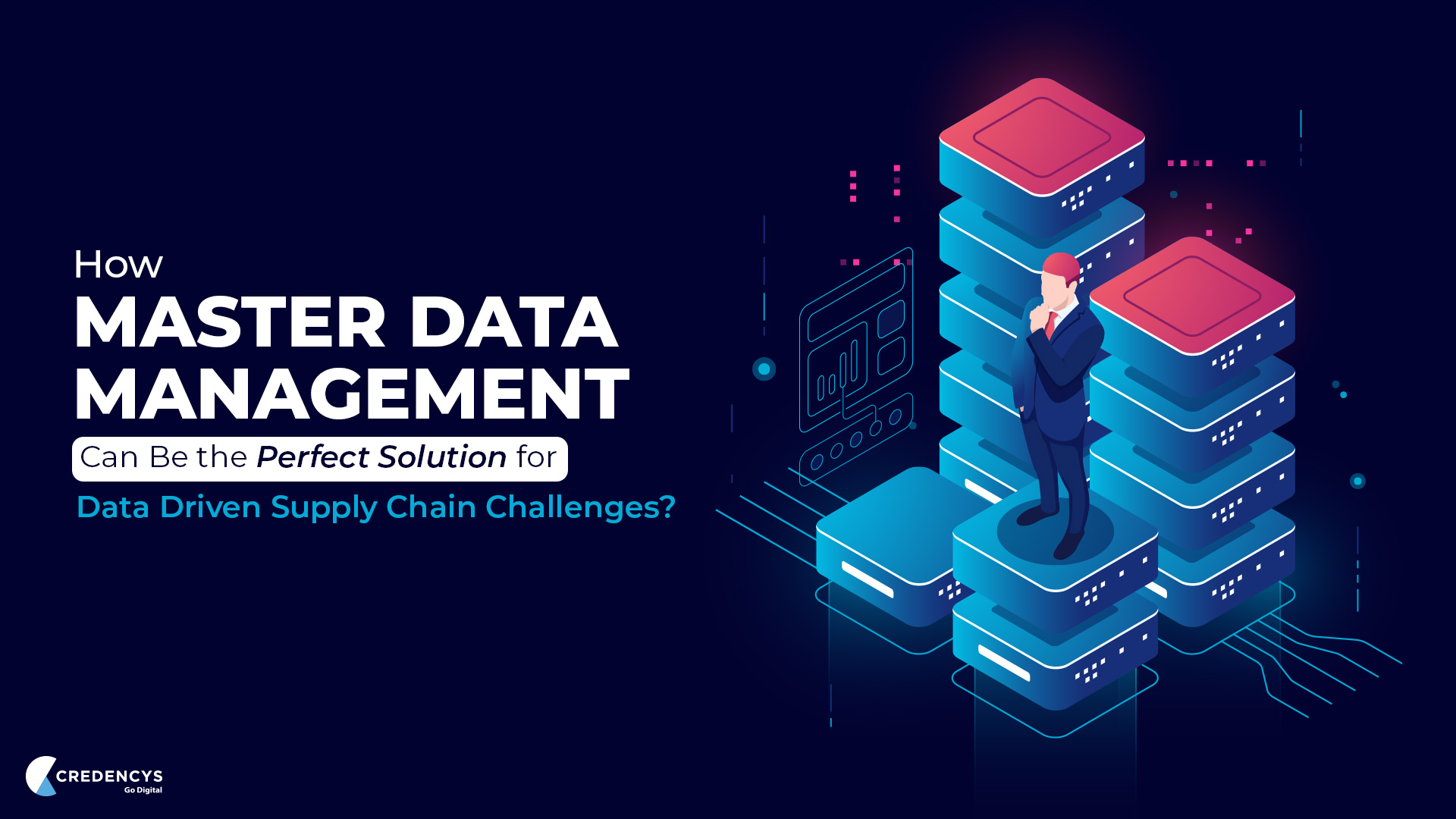Master Data Management – Here’re Top 4 Best MDM Implementation Strategy for 2022

Maintaining business data’s reliability, accuracy and quality are one of the major issues faced by modern-day businesses. For those who are seeking a better option to tackle that typical issue opting for Master Data Management (MDM) would be the best and wise decision. MDM offers the most simplified data management process which you can’t avail from others.
Here in this blog, we have elaborated about Master Data Management (MDM) and list of Best Master Data Management Implementation Strategy for availing its benefits.
What is Master Data Management (MDM)?
Modern-day business data are being utilized in various applications that include Customer Relationship Management (CRM) and Enterprise Resource Planning (ERP). Being used in versatile applications, there is a high probability of business data getting fragmented and redundant. Also, some data might get outdated during that time it will be very difficult for management to face several challenges to improve business performance.
In such a scenario, making use of Master Data Management could be the only best option. Especially, when business data keeps increasing, handling those data by Master Data Management (MDM) to maintain its accuracy and consistency would be much easier.
Understanding Master Data
Master data of a business covers all the operations of a business data and it is divided into 4 categories, which are listed below for your reference.
- Parties: It contains the data of the groups that do business with the organization this covers data of clients, prospects, suppliers, associates, etc.
- Places: Under this category data of actual places like demography, location, sites, zones, etc are stored and segmented.
- Things: This category collects the data relevant to the items/products/services that the business sells or manages.
- Financial and Organizational:This category covers data like business reporting and accounting classifications which are co-related to the organizational structures, business sales regions, business accounts, business cost, business profit, business product price lists, and so.
What Data Managed As Master Data?
Under the MDM the data managed is small when compared with the entire volume of your business data. But still, the process of managing the preservation of that small amount of business data is extremely difficult.
Here are the few benchmark recommendations from the experts that guide you to choose what data to be managed under the MDM.
- Behavioral data: Data that briefs how the business data interrelates with other data types are marked as master data.
- CRUD cycle: CRUD cycle means data that describe your master business data based on its life cycle and also based on how it is created, read, updated, deleted, and searched.
- Cardinality: Business data that defines the set elements are considered as master data. When the total number of set elements starts to decrease, the probability of business item/service/product which is considered as master data also decreases.
- Lifespan and volatility: Master data has less volatility when compared with transactional data.
- Intricacy:It deals with the simple objects which are much easier to collect and manage, so it is not categorized as the master business data.
- Value:Data that are marked as highly valuable are often considered as the master business data.
- Reuse:Data that are often re-used on multiple systems are considered as the Master business data.
Common problems in master data management:
- Data duplication: When users carry out data in different business units and the company takes them as separate events.
- Incorrect data: Duplicate names or written differently, resulting in billing errors.
- No data governance: The Company does not integrate data and cannot get the most out of it.
For example, if you create a unique customer service store in 5 databases with three different addresses and 4 different phone numbers, what data does your customer service retrieve? Likewise, if you decide to subscribe to a CRM service, the service provider will need a list of customers for its database. Which one are you going to send?
When To Start MDM?
- Increase sales: With better database management, customers are better managed, generating cross-sales.
- Competitiveness: When companies want to take a step ahead of their competitors by investing in an improvement in the quality of data that are the main tool for business growth.
- Efficiency: IT performance with data discovery, automation, cleansing, enrichment, and matching will encompass everything.
- Communication between areas: Thanks to these processes, we will be able to manage and share critical and strategic data for the future of the business that will be each of the departments to seek success.
Benefits Of Master Data Management (MDM)
- Master data is the essential information that the company collects throughout its existence, regardless of its activity or size. By not crossing information that may be redundant or outdated, the strategic scope is invariably achieved, making the company’s objectives, not in accordance with its situations.
- Master data management eliminates user errors that all companies are subject to, precisely by aligning any data entry sources and analyzing information. By doing so, it turns the faithful to reality as possible, for that the use of your data ensures that work teams gain access to qualified information and still in safety and regulatory compliance (as in the case of LGPD).
- By adopting master data management solutions, companies now have more agility in their data-based processes. In addition to greater security over these actions, making it possible to provide teams with only information that is necessary for each department, without impoverishing the macro record of information, nor limit decision makers to a macro view of the business and its greatest needs.
- Data from different parts of the organization can be accessed through a single interface with master data management tools. For example, CRM data and account data for the same customer can be viewed side by side using MDM tools.
- Data management tools ensure that data can be shared in common between applications and users without reformatting or duplication.
- Updates are easier to apply as MDM tools to keep master data across the organization in sync. With precision and accessibility, MDM tools enable better governance and data analysis.
- Data management tools are especially useful for larger organizations with strong cross-departmental data dependencies. However, organizations can avail its full benefits only if they opt MDM System for its business operation.
Top Best Master Data Management Implementation Strategy
For a company to be able to increase its effectiveness, overcome weighing challenges, impact adequate discipline, and also limit ultimate risks, they need a Product Master Data Management Implementation Strategy
1- Identify your issues using Data profiling
It’s a common notion that a problem known is half solved. This brings about the fact that identifying your issues is the first step in making strategy work for you. Wrong pieces of information will ruin your business faster and yield no result. Whatever strategy you’ll be using must be based on accurate data and information.
So before rounding up your data, ensure you go through them line by line before putting it in an archive. This will help rule out wrong data, get you informed about data quality issues, and provide the basic tips for solving these issues.
2– Consolidating to help comb out unwanted data
Getting your Master data consolidated is nothing but fantasy without combining data and information from different credible and reliable sources. However, almost all software used for master data management can collate and put in memory, all collective master data from different systems in different locations. Be it, partner’s data, customer’s, supplier’s, online site’s or asset’s.
In simple terms, consolidating your Master data involves merging every little piece of information from any source system. This allows you to know which data you have, which is a duplicate, which part to be deleted, and which is to be submitted to the main archive.
3- Putting out errors as well as data enhancement
Some software can be created and tagged “Data cleansers”. These are meant to check for errors and remove them, pair related data, evaluate and establish ultimate standards. When this is in place, it reduces manpower.
Another part is the governance of data. This empowers, by providing a hierarchy that prioritizes people, processes, and places to provide credible and reliable data to users all over the company. By providing ultimate rules and regulations, controlling access to the data, and creating privacy policies, it ensures that the data is available, usable, and secured.
4- Give people access to your Master Data
It’s important to enable data sharing within an enterprise through different forms to ensure we meet all data sharing needs. Going through all the previous strategies without sharing is a waste of quality time. You can also share your data with external colleagues like your suppliers. In a nutshell, data sharing is also an important strategy.
Conclusion
Technological tools, systems, or applications can evolve and have newer versions or updates. But your data will always be as it is. Same products as input, the same suppliers, and customers, having a Best Master Data Management Solution will surely leads to achieve your business goal in short term.
But with solid MDM software with sound strategic actions, you can always improve the quality of your Master Data. Enterprises can extremely shoot up their sales, build solid trust among customers, and also save quality time and energy. With this, we can see that both a tower and an organization needs a solid background. We can’t build them in the sky after all.






